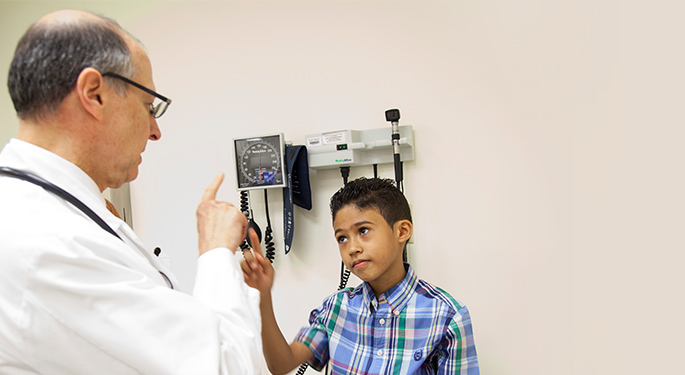Pediatric Movement Disorders

The Pediatric Neurology Program at the Mount Sinai Department of Neurology treats a wide range of disorders that affect movement, including dystonia, Tourette syndrome and other tic disorders, tremor, chorea, ataxia, juvenile Parkinson’s disease, and spasticity.
Recognizing that each child is different, our clinical experts are highly trained and experienced in designing a treatment plan personalized to each young patient’s individual needs. Because of the complex nature of movement disorders, we work closely with our multidisciplinary colleagues, including genetic counselors, neuropsychologists, and neurosurgeons, to comprehensively address the various symptoms a child may be experiencing.
Diagnosis
We diagnose pediatric movement disorders by asking questions about your child’s history, reviewing their symptoms, and conducting a careful physical examination. We also rely on state-of-the-art testing, such as neuroimaging and laboratory studies that may include genetic testing.
Treatments
Ongoing, multidisciplinary treatment is crucial to controlling symptoms. We ensure your child receives the best possible care by using a variety of approaches, which may include:
- Oral medications
- Botulinum toxin injections for dystonia and spasticity
- Physical therapy to retain and improve function
- Occupational therapy to teach adaptive living skills
- Practical and emotional support for your child and family, including support groups
- Psychological and psychiatric counseling and evaluation
- Referrals to other medical disciplines as needed, including referrals for deep brain stimulation surgery
- New medications available through clinical trials
Research on Pediatric Movement Disorders
We are active in research and participate in many multi-center, national trials, often coordinating with other institutions in New York City, throughout the country, and abroad. We are involved with imaging research and explorations of new medications to deepen our understanding of the causes and nature of pediatric movement disorders.